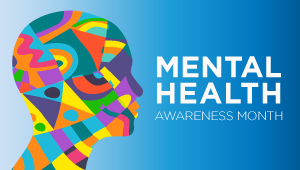A medication that can relieve symptoms of psychosis is underused

Study finds that many patients who might benefit from clozapine don’t receive it
People living with psychotic disorders often experience disruptive events like emergency hospitalizations, homelessness, incarceration, and self-harm or suicide. While antipsychotic medications can reduce the likelihood of those events, some people continue to have severe symptoms or crises despite medications.
A new study led by researchers at Kaiser Permanente Washington Health Research Institute (KPWHRI) found that clozapine, a medication specifically indicated when other antipsychotic medications have not worked, was underused in some health systems. Clozapine can help reduce the risk of self-harm for people who live with schizophrenia or schizoaffective disorder, and it is the only medication for that purpose that has been approved by the Food and Drug Administration.
“Clozapine is widely recommended as a preferred treatment for people living with psychotic disorders that are severe or resistant to other treatment options,” said Gregory Simon, MD, MPH, a senior investigator at KPWHRI and the lead author of the study. “What we saw when we looked at the data is that the actual use of clozapine was way below what guidelines would indicate based on the symptoms people were experiencing.”
The researchers looked at data for just over 76,000 patients in 11 large health systems that are part of the Mental Health Research Network. They found that fewer than 2 percent of patients with a diagnosis of a psychotic disorder had any record of starting clozapine in the year after experiencing at least one of three types of events that should have indicated it was a good option to explore. Those events were self-harm or a suicide attempt, frequent or intense suicidal ideation, or hospitalization or emergency care for symptoms of a psychotic disorder despite taking antipsychotic medication.
Rates of starting clozapine after an event varied, from 1 percent after a self-harm event to 5 percent after hospitalization or an emergency room visit. Fewer than 4 percent of patients who experienced an event had any record of clozapine treatment in the past, which suggests that the lack of treatment wasn’t due to trying it before with unsuccessful results.
“Those low rates of clozapine use were not surprising, since previous research shows similar low rates in health systems across the U.S. and the U.K.,” Simon said. “Prior data suggests that clozapine may benefit up to a third of people living with a psychotic disorder like schizophrenia, but fewer than 5 percent receive it. We built on those earlier studies and got a little more detailed by focusing on these specific events that serve as flags to consider clozapine, and by looking at people’s records of clozapine use before experiencing an event.”
Prescribing barriers, differences
There are some known barriers to prescribing clozapine. People who take it need to be monitored to ensure their white blood cell count doesn’t drop too low, which means making regular visits to a laboratory for blood draws. Clozapine also has side effects that can be serious for some people. And if clinicians are unfamiliar with its use, they may be hesitant to prescribe it. But for those who don’t see improvement with other medications, it can provide relief from ongoing symptoms.
The study also found that there were racial and ethnic differences in who was prescribed clozapine, which mirrors previous research. Among patients experiencing one of the three events, rates of prior clozapine use were significantly lower for non-Hispanic Black patients and Hispanic patients. Rates of starting clozapine after an event were also significantly lower for non-Hispanic Black patients — about half that of non-Hispanic white patients.
“We weren’t able to look at exactly why clozapine wasn’t prescribed,” Simon said. “But it’s possible clinicians didn’t recognize these events as a reason to try it, and it’s also possible that patients declined it when it was suggested because they were concerned about the side effects or about the need for ongoing monitoring while they were taking it.”
More education for clinicians and patients about how and when clozapine might be a good option could be helpful, he suggested. And making monitoring easier could make that piece less of an obstacle for people who are considering taking it.
This research was funded by the National Institute of Mental Health.
KPWHRI senior investigator Susan Shortreed, PhD, was a coauthor on this study.
By Amelia Apfel
New findings

Simpler models to identify suicide risk perform similarly to more complex ones
Models that are easier to explain, use could have better uptake in health care settings.
Research

Improving and advancing mental health care
KPWHRI researchers are contributing to better mental health care for people nationwide.
Virtual screening

Detecting, assessing suicidal ideation during COVID-19
How new processes improved suicide risk identification when mental health visits went virtual.


